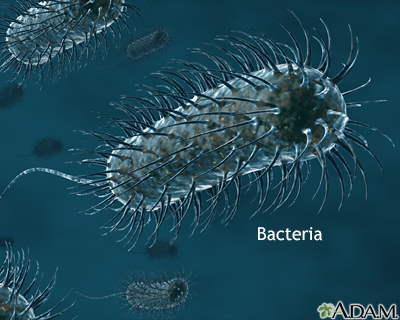Anaerobic bacteria
Definition
Anaerobic bacteria are bacteria that do not live or grow when oxygen is present.
In humans, these bacteria are most commonly found in the gastrointestinal tract. They play a role in conditions such as appendicitis, diverticulitis, and perforation of the bowel.
Alternative Names
Anaerobe
Gallery

References
Murray Pr, Rosenthal KS, Pfaller MA. Non-spore-forming anaerobic bacteria. In: Murray PR, Rosenthal KS, Pfaller MA, eds. Medical Microbiology. 9th ed. Philadelphia, PA: Elsevier; 2021:chap 31.
Scheld WM, Patel R. Introduction to microbial disease: pathophysiology and diagnostics. In: Goldman L, Schafer AI, eds. Goldman-Cecil Medicine. 26th ed. Philadelphia, PA: Elsevier; 2020:chap 261.